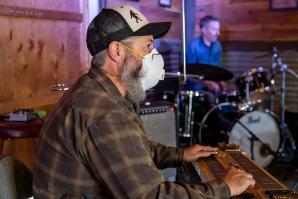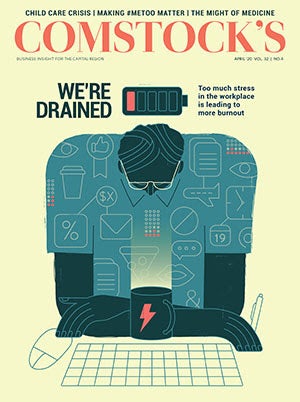Between the time I write this and the time you read it, many things will have changed. While editing for a monthly magazine allows in-depth reporting and analytical stories, the big drawback is the changing nature of news.
It’s not usually a problem, because we understand the process of producing a monthly magazine. We often plan our main stories months in advance, with the reporting taking place 3-4 months before publication. We usually send our pages to the printer in the middle of the month, allowing more than 10 days before the magazine reaches retail outlets and about 14 days before it lands in mailboxes.
Click here to read coronavirus coverage
But this April issue of Comstock’s became a much bigger challenge because of the explosiveness of the new coronavirus. Each day in March, as we edited, designed and proofed this issue, more developments came, including COVID-19’s designation as a pandemic by the World Health Organization, President Donald Trump’s declaration of a national emergency, the widespread closures of schools across the Capital Region, the urging for people to practice social distancing, and Gov. Gavin Newsom’s call for Californians older than 65 to isolate themselves and bars to close.
Just a few days before the magazine was scheduled to go to the printer, we made the decision to change the cover of this issue. Our original plan, launched more than a month earlier, was to use a photo illustration to highlight our story about the growth in the health care industry (“The Might of Medicine”), with the headline “Blowing Up.” While that illustrates the substance of the story, it seemed harshly inappropriate, given the coronavirus pandemic and the uncertain way it might play out in the weeks and months ahead.
Though we opted to still print the health care story — it’s a deeply reported piece about an important industry in the Capital Region — we decided a more appropriate approach for our cover would be an illustration for our workplace story about worker burnout and stress (“Battling Burnout”).
Still, three of our four stories this month highlight important issues that have been brought to the forefront because of the coronavirus.
The story about health care points out the lack of hospital beds in the region, compared to the rest of the nation and other countries, and the region’s major providers’ plans for new and expanded facilities. As we finished this issue, many infectious disease experts were expressing concern that our emergency departments and hospitals might not be able to accomodate the number of patients who might need acute care.
The story on burnout reports that stress in the workplace is a major contributor, and the coronavirus has added to that stress, as companies deal with how to protect their employees while still attempting to operate. Many employees were told to work from home; those used to face-to-face contact have had to adapt to communicating remotely, not the easiest transition for many workers, as well as sometimes posing a technological challenge.
And “Child Care Crisis” reports on the urgent need for more day care facilities. When Sacramento County and other local jurisdictions announced lengthy school closures, parents already dealing with the shortage needed to scramble, often in just a few days, to line up additional care for the time their children would normally be in the classroom. Many put together patchwork schedules and others modified work schedules to be able to stay home with their children and practice social distancing.
The COVID-19 pandemic has exposed serious weaknesses in all three areas, making it even more critical that government and private industry work together to find solutions.
Another uncertainty is how difficult this will be on local business and workers across the Capital Region, especially those who toil in the service and retail industries. As businesses close, lay off employees or reduce hours to promote social distancing, it will be difficult for some of the most vulnerable workers in the region to keep up with their monthly bills.
One common practice in the business world already has changed, with the all but disappearance of the handshake. The Centers for Disease Control and Prevention has advised people to avoid shaking hands, so now we’re tapping elbows, a way to still show respect and a symbol that we’re all in this together.
–
Stay up to date on the effects of the coronavirus on people and business in the Capital Region: Subscribe to the Comstock’s newsletter today.
Recommended For You

Sign of the Times
Sacramento band streams benefit show instead of playing before live audience
The alt-country band JonEmery & the Unconventionals performed a set on Facebook to benefit the 10 employees of the Torch Club, where the band had been scheduled to play on March 25.

The Coronavirus Challenge
The pandemic is exposing cracks in our systems, but it’s also an opportunity to strengthen systems
Before the outbreak and spread of the new coronavirus, disruptive technologies, global competition and instant 24/7 connectivity made forecasting difficult. Today, the sheer magnitude and instability triggered by COVID-19 has made the road ahead far less clear. Or has it?





